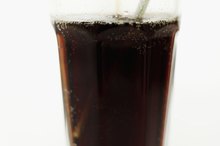How to Lose Stomach Fat and Reduce Blood Pressure
Belly fat isn't just unsightly at the beach, it's also a risk for serious health problems, including type 2 diabetes, cancer and high blood pressure. If you've found your midsection expanding as you get older, that's normal. Your metabolism slows with age and you lose muscle mass. To get your waistline under control and reduce your blood pressure, the recommendation is the same: eat a healthy diet and exercise regularly. Consult your doctor for more specific changes you can make to reduce your weight and improve your cardiovascular health.
Eat a nutritious diet containing complex carbohydrates, such as fruits, vegetables and grains, and lean proteins, including chicken, fish, beans and soy products.
How to Jump-Start Your Metabolism While in Menopause
Learn More
Select whole grains, like brown rice and whole wheat, instead of refined grains and grain products, like white flour and white bread and pasta. Refined grains have had the bran and germ removed, along with considerable amounts of fiber and other nutrients. They have a greater effect on blood pressure and insulin, which over time can lead to increased fat storage.
Eliminate added sugars from your diet. Sweetened beverages, commercial baked goods and candy are off-limits when reducing belly fat. Added sugars contribute to blood sugar surges and insulin sensitivity, which will hinder your fat-loss goals.
The Best Way to Reduce Visceral Belly Fat
Learn More
Choose heart-healthy mono- and polyunsaturated fats over artery-clogging saturated and trans fats. The former are found in nuts, fish and olive oil, while the latter are found in animal products and commercial snack foods and margarine.
Keep your sodium intake below 1,5000 mg, which is the recommended daily limit for people with high blood pressure. Eat whole, unprocessed foods and season your foods with herbs and spices instead of salt.
Get at least 30 minutes of moderate-intensity exercise each day. According to Harvard Health Publications, findings from a Duke University Medical Center study showed that sedentary individuals saw a 9 percent gain in abdominal fat over a six-month period, while those who exercised moderately gained no belly fat and those who exercised more intensively lost abdominal fat.
Build lean muscle mass by strength training at least twice a week. The more lean muscle mass you have, the more fat your body burns while you're at rest. It's especially important to strength train as you age to prevent lean muscle mass loss and encroaching belly bulge.
Tips
Exercising for at least 30 to 60 minutes a day can have profound effects on your waistline and your blood pressure. For example, if you're a jogger and you weigh 140 pounds, you'll burn more than 500 calories each hour you exercise. If you jog for an hour every day, you can lose 1 pound each week. In addition, you'll lower your blood pressure by 4 to 9 millimeters of mercury, mmHg, says MayoClinic.com.
Related Articles
References
- MayoClinic.com: Belly Fat in Men: Why Weight Loss Matters
- Harvard Health Publications: Abdominal Fat and What to Do About It
- JoyBauer.com: Health Benefits of Refined Grains
- Integrative Oncology Essentials: Anti-Cancer Nutrition: Sugar and Carbohydrates 101
- Harvard School of Public Health: Sugary Drinks and Obesity Fact Sheet
- American Heart Association: Know Your Fats
- MayoClinic.com: Sodium: How to Tame Your Salt Habit Now
- Health Status: Calories Burned Estimation
- MayoClinic.com: 10 Ways to Control High Blood Pressure Without Medication
Writer Bio
Jody Braverman is a professional writer and editor based in Atlanta. She studied creative writing at the American University of Paris and received a Bachelor of Arts in English from the University of Maryland. She also received personal trainer certification from NASM and her 200-hour yoga teacher certification from YogaWorks.









